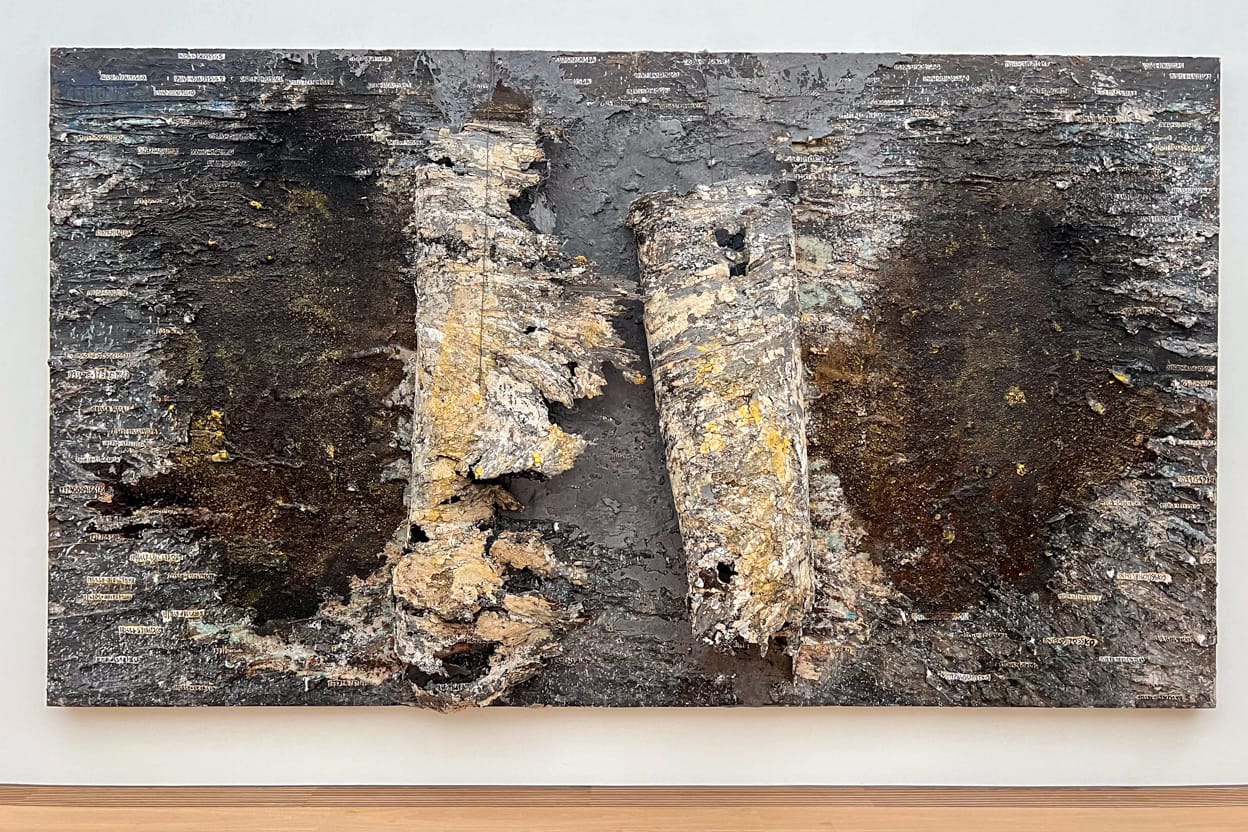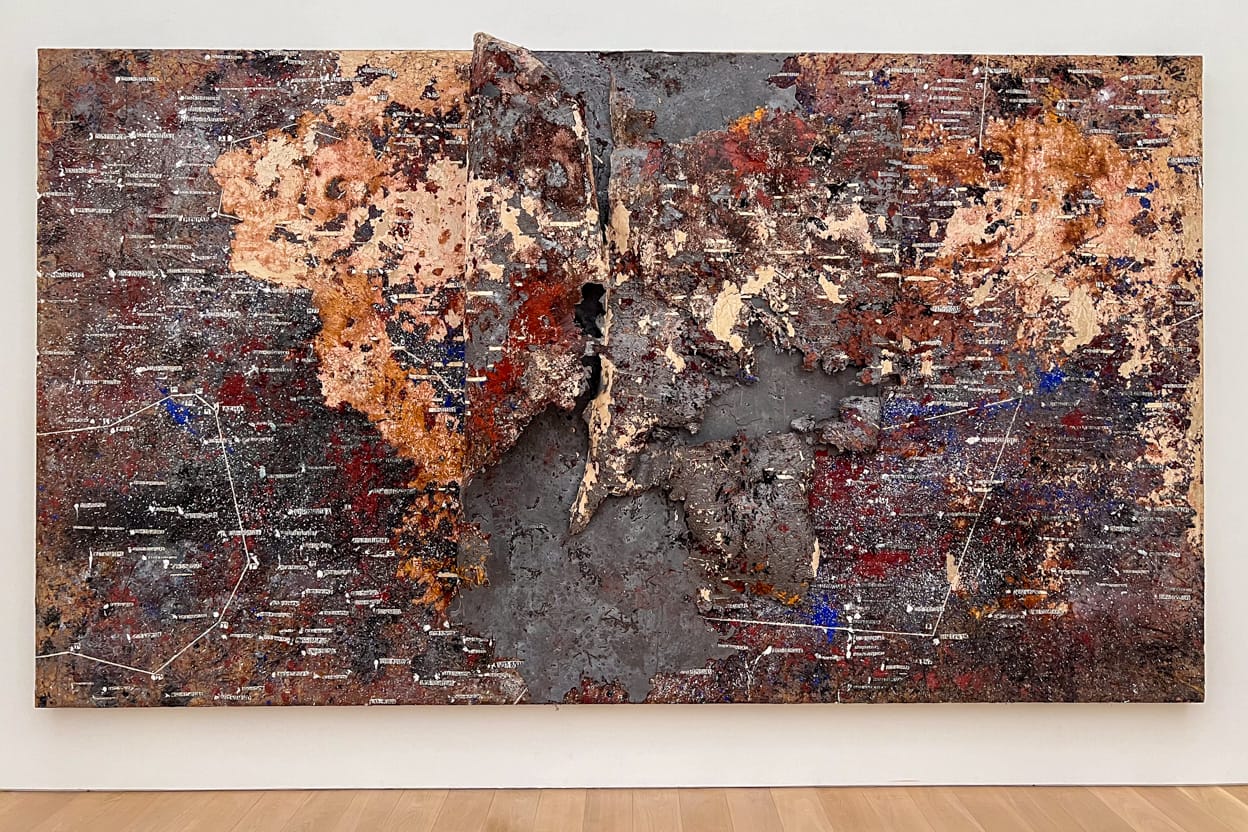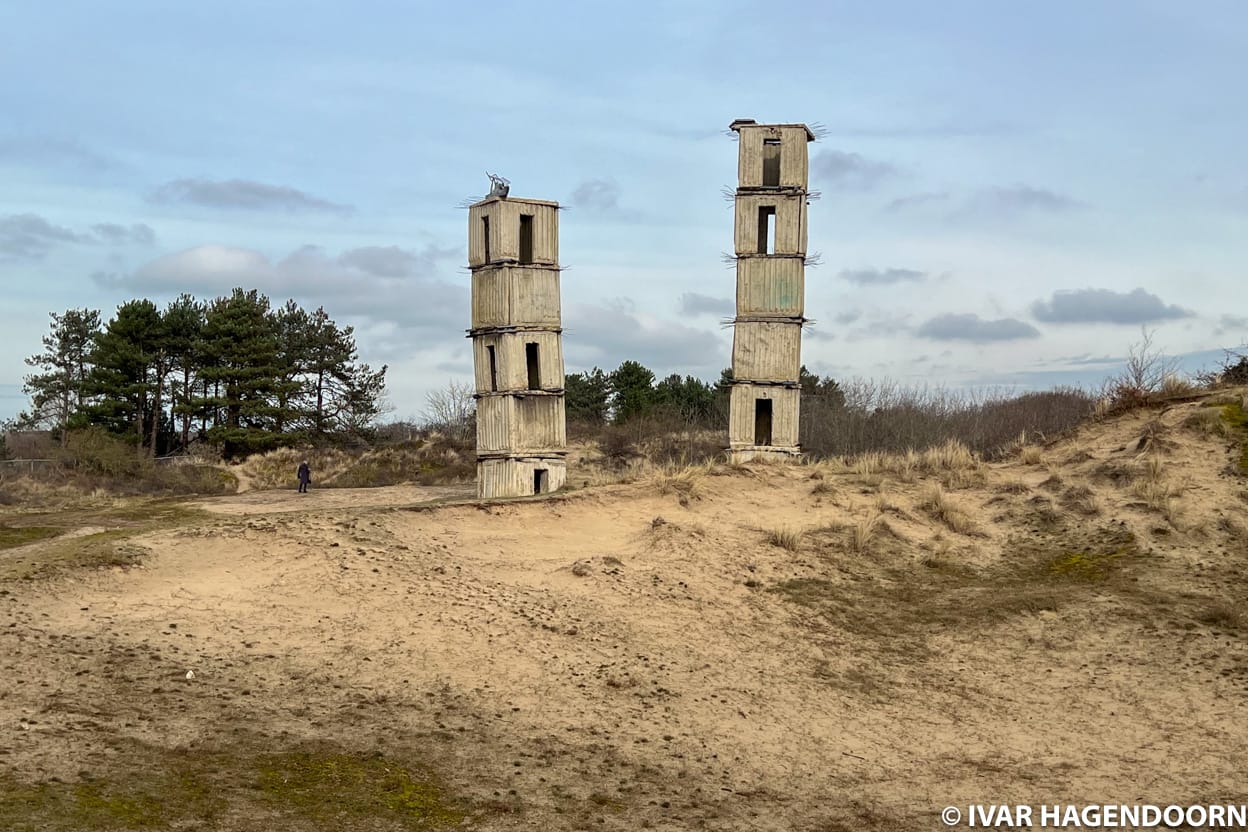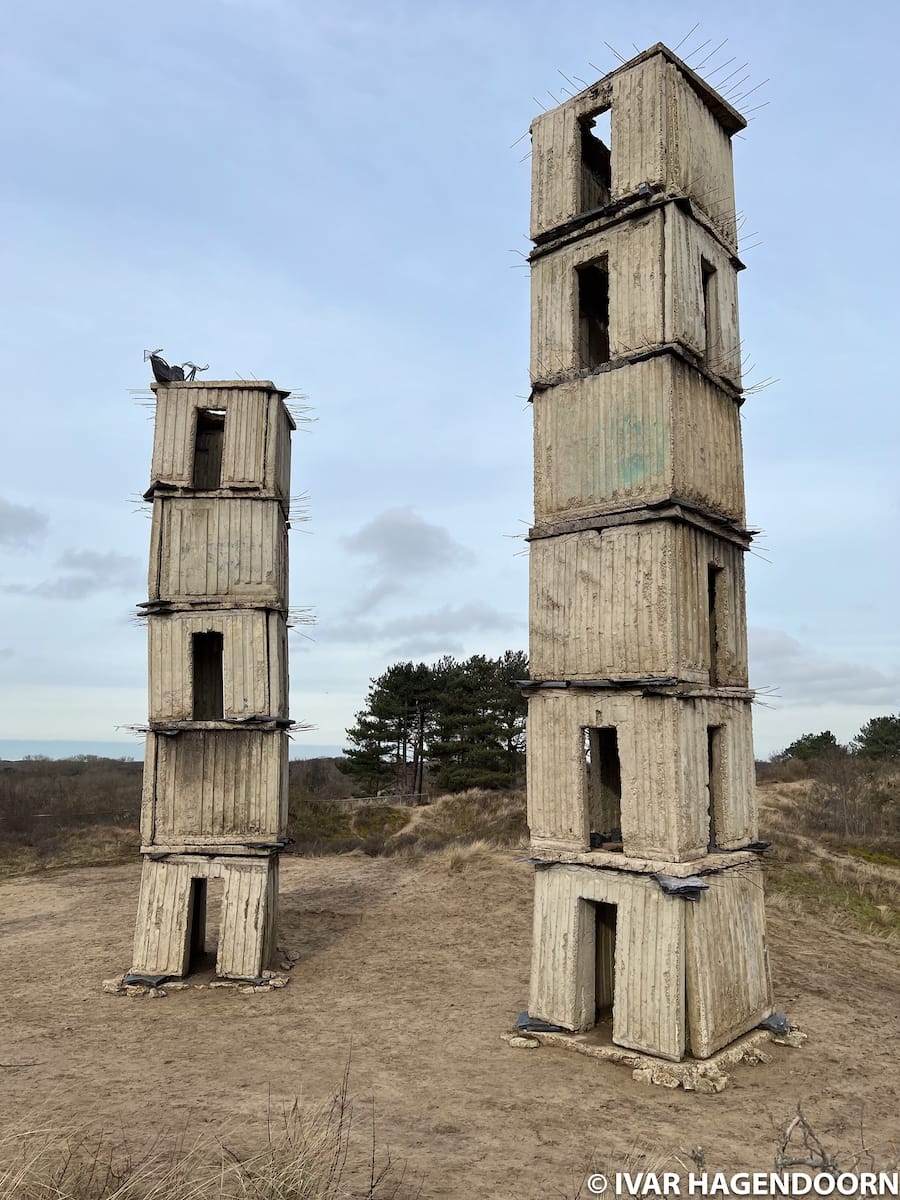There is a fine line between the sublime and the bombastic. At its best the work of Anselm Kiefer inspires awe. But sometimes his work collapses under its own weight. Anselm Kiefer is incredibly prolific, so it is only natural that not everything he creates is as good or as interesting and that not everything will appeal to everyone. The solo exhibition at Museum Voorlinden in The Hague shows a selection of works from the past 10 to 15 years, some of which are great, others are, well, not that great.


Anselm Kiefer, Sternenfall (1998-2016)
I loved the large vitrines, especially "Im Herbst dreht sich die Erde etwas schneller (0.06 sec)" (2018), which is part of Museum Voorlinden’s permanent collection. I also liked "Sternenfall" (1998-2016), which sees Kiefer engage with the cosmos instead of German history. In Anselm, the documentary by Wim Wenders, you can see Anselm Kiefer create some of these paintings by pouring liquid lead over the canvas, which is subsequently partially peeled off to create a three-dimensional structure. In these paintings Kiefer has tried to render the magnificence of the night sky in equally magnificent artworks.
Elsewhere in the exhibition Kiefer overshoots again. "Die Winterreise" (2015-2020) is an outsized shoebox diorama, which shows a winter landscape with a hospital bed on wheels, paintings of trees and mushrooms and the names of German artists and historical figures. In both "Aus Herzen und Hirnen sprießen die Halme der Nacht" (2019-2020) and "Sichelschnitt" (2019) the symbolism of the fields and the scythes is a bit too obvious for me. Incidentally, Sichelschnitt is also a reference to the Manstein Plan, the German plan for the Battle of France in 1940, because, of course, in the work of Anselm Kiefer nothing is ever incidental. Another room has been transformed into a golden wheat field complete with terracotta snake, an allusion to the Morgenthau Plan, a proposal by U.S. Treasury Secretary Henry Morgenthau to de-industrialize Germany after the end of World War II and transform it into an agricultural society, a proposal which Kiefer has referred to in various other works. This installation too is a bit too literal for me, I much prefer the paintings.
Perhaps because the exhibition takes place in the Netherlands the organizers thought it would be nice to include some works that feature bicycles in the form of a stand-alone sculpture or attached to a painting.
As part of the exhibition Museum Voorlinden has installed two of Anselm Kiefer’s concrete towers in the dunes behind the museum. In 2007, both towers were installed in the courtyard of the Royal Academy in London, where they looked out of place, but here they fit perfectly. They also reminded me of the concrete bunkers from the Second World War that can still be found along the coast of the Netherlands. I hope the installation will be permanent.
Anselm Kiefer: Bilderstreit is at Museum Voorlinden, The Hague through 25 February 2024.
Links
My brief review of Anselm, the film by Wim Wenders.

